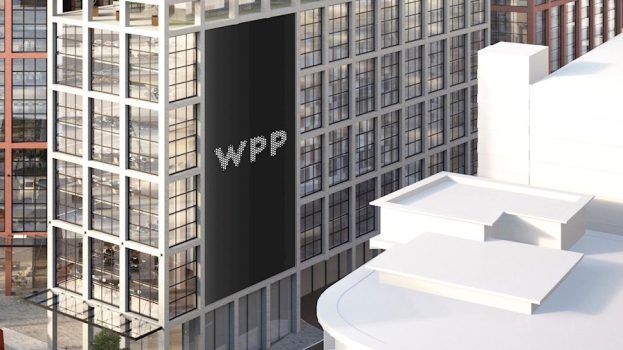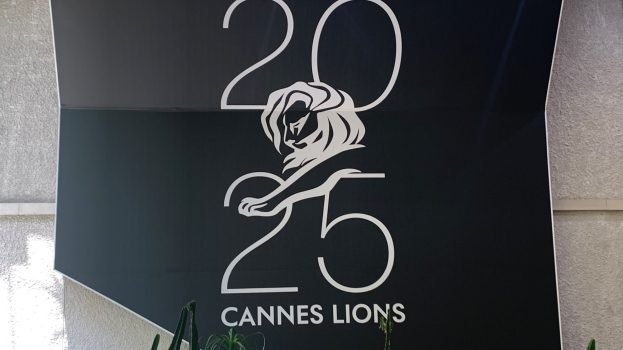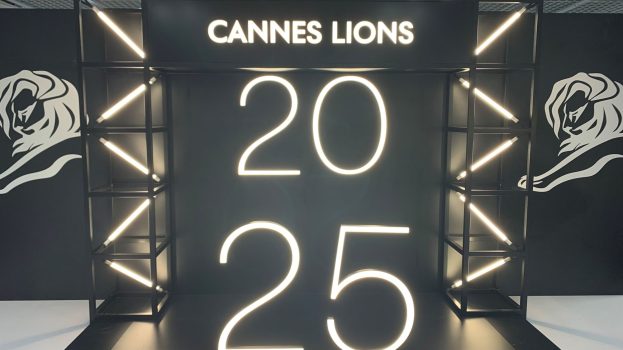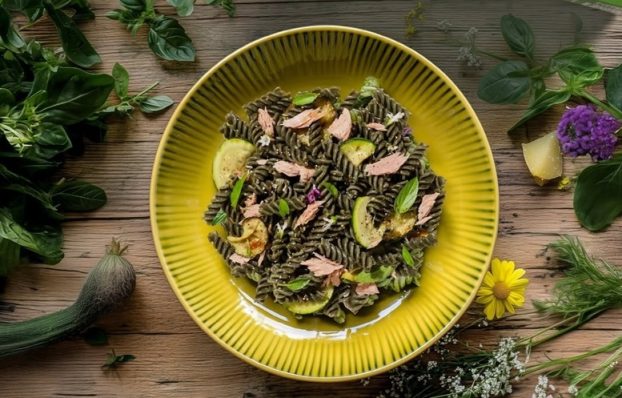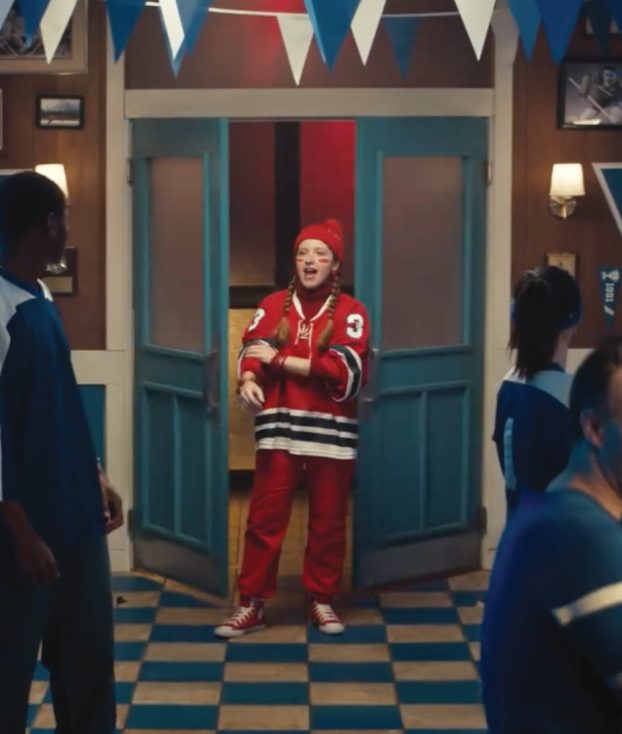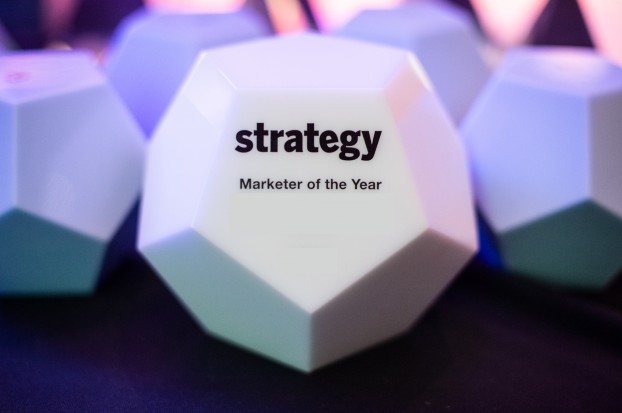Sid Lee may not be the new kid (around since the early ’90s and formerly known as Diesel), but they are the new kid on the AOY block. It’s the agency’s first time medaling in strategy’s awards, and considering their global reputation for innovative work, it’s about time.
Sitting around a table in their brand-new Toronto office in the Distillery District, president Jean-François Bouchard, VP strategy Eric Alper, VP senior partner Martin Gauthier and managing director Vito Piazza, reminisce about the evolution of the agency, from opening European offices to diving into experiential, design, architecture and branded content, to taking chances on new interactive, digital and social media.
“If you walk through our agency, you’ll see a bunch of people working on a 20-storey building,” says Bouchard, “and then you’ll see people working on an iPhone application that will be globally launched, then you’ll see people working on a social network platform, then a bunch of guys working on events to be deployed in 10 different countries around the world. This diversity, just a couple of years ago, seemed nuts.”
With such breadth of services, it’s no wonder two of Sid Lee’s cases this year revolve around new brand identities (STM and Vidéotron), while the SAQ work redefines how consumers purchase wine, and Tourisme Montreal leveraged blogs and social media. And then of course there’s Adidas. From AR codes on sneakers to reimagining a scene from Star Wars, the Adidas work never seems to stop innovating – much like the agency itself.
So how does Sid Lee make this diversity work? They boil it down to the agency’s culture of “entrepreneurial plus communal” spirit, as Alper puts it, and of course finding the right talent – just one
of the motivations for opening shop in Toronto this fall. The new location will service the agency’s
pre-existing Toronto-based clients such as Red Bull, Winners, Kraft and the newly acquired (in May) INQ Mobile, with the plan to attract more Toronto-based business, as well as clients out of the U.S.
But, Bouchard says, “It’s really a quest for talent more than it is a quest for clients. Our belief is that if you have the best talent, clients will follow at some point…A lot of people believe that we went [to Europe] because of Adidas, but actually we won Adidas after committing to opening in Europe.”
While the Sid Lee team doesn’t know how exactly the agency will evolve in the coming years, the one certainty is that there will be change – a constant stream of it. “It is quite likely that the pace of change will accelerate again in the next decade, so our challenge as we’re growing is to remain as agile as we have been in the past,” Bouchard says, noting that they’ll do so by having numerous small ateliers around the world, an “armada of pirate ships at different ports,” as they put it.
When it comes to further expansion, it’s not a matter of “if,” but “when” it will happen. They anticipate opening an office in the U.S. within the next couple of years and are setting their sights on emerging markets like Mexico.
Speaking with the team, it’s hard not to imagine the agency as a perpetual motion machine. “A lot of seasoned people in this industry think that this business is a bunch of sprints – you run fast, then you stop, you coast for a while,” says Alper. “No, it’s a marathon. We’re in an endurance sport here.”
SAQ demystifies wine
A survey showed 90% of the Société des Alcools du Québec’s (SAQ) clientele were interested in wine, but had limited knowledge, and they felt lost when entering an SAQ store. In-store communications were not designed according to consumers needs but rather according to industry standards. To promote wine culture, consumers needed to discover wine on their terms and understand which bottles to seek out.
The solution came in the form of “Taste Tags,” eight colour-coded taste profiles that correspond to different categories of wine. The system described every bottle of regular wine in the store, serving as an entry point to discover wine culture. Consumers could identify their wine profile, find the corresponding Taste Tags, and determine what bottles best suited their tastes.
A “Taste Kit” was also launched, which offered small quantities of different wines, and wine tasting weekends were held at SAQ stores.
An accompanying campaign launched with three 30-second TV commercials. Also, a competition was held in which contestants could spot a Taste Tag on TV for a chance to win $1,000, and a flyer was delivered to over two million people explaining the Taste Tags. On radio, live shows were broadcast from SAQ stores over two Saturday afternoons.
Online, banners drove to the SAQ site where consumers could take a test to identify their Taste Tag. On popular Quebec food sites Recettes.qc.ca and Ricardocuisine.com, Taste Tags were integrated into recipes. Similar initiatives were executed in Ricardo magazine and its namesake, celebrity chef Ricardo, discussed the Taste Tags on his television show. An iPhone application was also released, allowing consumers to match wines with Taste Tags, find food pairings and locate bottles in retail outlets close to their homes.
The launch period sold 14% more wine cases than a similar promotion and exceeded the target by 31%. For the first time in years, sales growth for regular wine outpaced that of specialty wine, and the taste kits created for the campaign were sold out in less than 10 days.
On the consumer side, over 81% of clients are now familiar with the Taste Tags and 40% used the system to discover their taste profile or select a bottle of wine.
Adidas takes it to the streets
Following its raucous “House Party” in 2009, Sid Lee wanted Originals to be even more engaged with its worldwide consumers, and get them to see that it’s not just a heritage brand – that it fits with their street lifestyles.
The goal was to deliver on “Celebrate Originality” by driving the brand back to where consumers could connect with it: the street, which became the backdrop to all Originals communications in 2010. It’s the sum of its parts that makes Originals so original – sticking to an overarching story (the street) that breaks into many sub-stories (for example, Star Wars).
In January, the campaign was kicked off with a web video for the Originals’ Star Wars collection. It mixed elements from the neighborhood with those of a galaxy far, far away, and was accompanied by the “Death Star Application,” a Facebook and Google Earth-fuelled app that shows clips of the Dark Side obliterating your neighbourhood.
At the beginning of February, Snoop Dogg led an “Imperial March” down the streets of New York followed by a trail of Storm Troopers.
Also, unique AR codes were printed on the tongues of the five-shoe collection, which opened up a virtual neighborhood with interactive games.
In March, the party hit London with “The Street Where Originality Lives” web video, hosting celebs like David Beckham, Ciara, Snoop Dogg and Jeremy Scott. To stay global, the video featured stars from around the world, including Hyori Lee (South Korea) and Cheer Chen (Taiwan). Big-time bloggers like Hypebeast and HighSnobiety were also invited.
Adidas also showed off its style with a women’s lookbook, using the same models that appeared in the “Street” video, including Tallulah Morton and Agyness Deyn.
To celebrate World Cup fever in June, Originals released the Cantina video. Recycling original footage from Star Wars, Sid Lee spliced celebs from the “Street” video into the intergalactic speakeasy.
And the results? “The Street Where Originality Lives” video has nearly two million Youtube views, while the Cantina video has nearly four million. Originals became the most followed fashion brand on Facebook, with three million fans. Research confirms a shift in perceptions of Originals, with consumers seeing it as a more modern lifestyle brand.
Vidéotron’s power to win
Despite razor-thin growth in the last year, the telecom market has remained very aggressive, and the name of the game has been innovation and new product launches. In 2009, Vidéotron’s competitors introduced faster 3G wireless networks, mobile internet access, IPTV, mobile television and web television just to name a few.
Vidéotron broadened its global product offer with launches including web content streaming and its very own 3G+ mobile network scheduled for 2010. To position Vidéotron as the leader in telecom, Sid Lee needed to break the barriers between advertising and other forms of communication, and find a positioning that could transcend all messages, channels and products.
Consumers were claiming more power, and products would always grow in depth and breadth – internet would always get faster and telecom platforms would always become more diversified. So, the strategy became handing the power to consumers and offering them infinite possibilities, not limiting the offer to cable products. The brand mission became “The Infinite Power.”
“The Infinite Power” became a tool to promote high-speed internet, television, on-demand content, product bundles, terminals, mobile phones and every possible product or bundle. It also supported the promotion of a broader experience including customer service and tech support.
All communications adopted the prefix “The power to…” which worked with every product or service: “The power to shift to the fastest of the fast” for the internet product range; “The power to talk to a good old fashioned human being” for 24/7 customer service; “The power to save” for promotions, etc. Over 60 different lines were developed within 12 months. This new voice was complemented by a new identity including a logo.
“The Infinite Power” is an ongoing platform with hundreds of different executions across offline and online media.
As a result, Vidéotron’s subscriber growth surpassed the competition across all products.
STM puts society in motion
To increase ridership, Société de transport de Montréal (STM) needed a new mission statement with a clear identity that would unify the brand with its travellers, and to spark behavioural changes among everyone involved, from commuters to employees.
They decided to focus on environmental positioning since it was pertinent to audiences and was one of the most viable arguments against STM’s greatest competitor: the car.
Travellers were made aware that public transportation was one of the most eco-friendly alternatives for commuting, while employees were reminded of their involvement in a noble cause.
The campaign was positioned around the promise “Breathe Better” through four themes: improvement of service, impact of public transportation, concrete gestures of STM and civic engagement. The “Breathe Better” promise, however, could not be used as a mass communication tool since it was vulnerable to attack. So the theme “Society in Motion,” was articulated around a pact between STM and its travellers. The STM (blue arrow) and commuters (yellow arrow) unite their efforts to take action for the environment (green). 
To put this in motion, STM pledged to improve its service and committed itself to environmentally conscious actions: biodiesel buses were cleaned with biodegradable detergents, improved buses were introduced and the frequency of buses and metros was increased during peak times. STM also created package deals with the rentable Bixi bicycles and partnerships with festival promoters to provide public transportation to events.
Riders were asked to join the movement by using public transport more often. In less than seven months, the campaign changed the way people think of the STM. According to an Ipsos Descarie post-test, the STM came in third behind Greenpeace and Cascades when consumers were asked which company was most environmentally conscious.
Customer satisfaction significantly increased from 79% in 2007 to 86% at the end of 2009. The campaign managed to maintain a stable number of riders despite the loss of 35,000 jobs in Montreal. And in less than one year, STM changed perceptions of its commitment to the environment, allowing riders to feel as though their travel choice is headed in the right direction.
Tourisme Montréal stirs up local buzz
In the context of 2009 – increased competition in destinations, a recession hitting travellers and no Grand Prix in the summer – Tourisme Montréal needed to optimize its marketing efforts.
Today’s travellers have changed their habits, seeking authentic sources of information, and planning and booking trips online.
Although Montreal is a top-notch international destination, its attractions fail to entice consumers the way those of other large cities do. In Montreal, it’s not tourist attractions, but rather the spirit of the city, that really distinguishes it. To encourage travel, Sid Lee had to communicate in a more intimate and conversational manner.
The solution was to give consumers a glimpse into Montreal’s day-to-day workings – to hand the mic to Montrealers themselves, giving them a chance to showcase their passion for the city and invite tourists to spend a weekend living like a local.
Five themes were chosen that reflect motivations for travelling to Montreal: girl’s getaway, nightlife, gay life, gastronomy and arts & culture. For each theme, ambassadors became bloggers, revealing the city’s hidden treasures on the “Get the Local Buzz from Montréal Insiders” blog hosted on the Tourisme Montréal website. 
Social media sites like Facebook, Twitter and YouTube were used as each blogger created profile pages to interact with travellers, share content and field questions. Links were also created between content and famous blogs, magazines and influential social media. In the fall, famous Twitter-er Gary Vaynerchuk came to Montreal and showcased the city to his fans. To drive traffic to the newly created blog, banners showed videos of the bloggers and promoted “Sweet Deals” on travel.
Offline, street stunts in New York and Toronto helped generate interest. One blogger was even interviewed by CBS’s The Early Show.
Despite the difficult context of 2009 and an advertising budget that was reduced by 26% from the previous year, Tourisme Montréal increased all indicators of performance.
A wealth of content was created (articles, photos, comments) and strong communities were built on Facebook and Twitter. Better still, website traffic increased by 19.5% and the conversion rate of Sweet Deals increased by 17%. Finally, room bookings through the Tourisme Montréal website increased by 14% as compared to 2008.
Jump to:
Silver: Adrenaline & doubt fuel Taxi
Honourable mention: BBDO’s winning insights
Finalist: CP+B’s winning evolution
Finalist: Lg2’s winning streak

